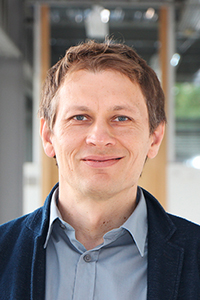Demonstrators
On this page, we offer you an overview of each demonstrator created at ScaDS.AI Dresden/Leipzig. You can check out all of our demonstrators in the ScaDS.AI Living Lab locations.
Our Demonstrators
FloodVis
- Immersive virtual reality experience
- Based on existing simulation data and geospatial information
- Preprocessing of data using elevation data, areal images, water level, and building information
- Applying areal images as texture on terrain layers and water surface for increased visualization accuracy
- Interactive environment with intuitive navigation methods
- Enhanced navigation mechanism to avoid motion sickness
Creators: Marzan Tasnim Oyshi, Verena Maleska
asanAI
- No-code toolkit to design, train and test machine learning models
- No programming knowledge required
- Runs in browser / no installation required
- Works entirely offline
- User privacy is guaranteed
- Single-click automatic generation of Python/NodeJS code
- Suitable for beginners as well as expert users
Creator: Norman Koch
MultiCut
- Gamification of multicut problem
- Providing an intuitive and interactive way to understand a data segmentation task
- Score-based approach to guide the players optimizing their selected multicut
- Using both scientific and non-scientific examples
- Developed in Python, runs on both Linux and Windows
Creator: Jannik Irmai
Big Data Performance Analysis
- Big data framework internals are often hidden form the user
- Monitoring internal behaviors such as memory access patterns are crucial for analyzing the application’s performance
- Measurement codes are added to Apache Spark and Flink
- Both tracing and profiling methods are supported
- Providing side-by-side comparison of performance metrics
- Functions of interest can be identified by the user
Creator: Jan Frenzel
OmniOpt
- Automatic hyper-parameter optimization for a wide range of problems
- Handling of use-case as black box
- Highly parallel approach (available on Taurus HPC)
- Stochastic optimization algorithms (TPE, Hyperopt)
- Capable of handling a large number of parameters
- Automatic evaluation and plotting functions
Creators: Dr. Peter Winkler, Norman Koch
Napari-KICS
- Estimating chromosome sizes using image processing
- Applicable to all karyotype images
- Automatic identification and labeling of chromosomes
- Intuitive graphical user interface to enable manual adjustments
- Providing multilayer representation of chromosome characteristics
- Freely available as a plugin for Napari
Creator: Arne Ludwig
Content Based Image Retrieval (CBIR)
- Retrieving images similar to an input image
- Based on the on-the-fly calculated similarity scores
- Machine learning model trained on a large set of historical images from the city of Dresden
- Fast identification with low processing overhead
Creators: Dr. Christoph Lehmann and Dr. Taras Lazariv
Bridging between Data Science and Performance Analysis
- Bringing performance analysis methods to the world of data science
- Providing precompiled jupyter kernels for performance analysis
- Providing Score-P Python binding to analyze performance of Python codes in Jupyter notebooks
- Enabling global as well as cell-based tracing of Python code performance
- Recorded traces available for Vampir (OTF2)
Creators: Elias Werner, Lalith Manjunath, Jan Frenzel, Dr. Sunna Torge
ImageSeg
- Applicable for all image segmentation tasks
- Enhanced annotation mechanism to improve task automation
- Intuitive and no-code graphical user interface
- Batch processing of unlimited number of images
- Single-click execution in browser (no installation)
- Short return time, thanks to its execution on Taurus HPC cluster
Creators: Dmitrij Schlesinger, Norman Koch, Dr. Peter Winkler, Patric Röhm
CodeCAI
- Dialogue system for creating an analysis workflow
- Reducing learning overhead
- Simplifying handling of libraries
- Explaining analysis results in an understandable way
- Automatic mapping of natural language to Python code
Creators: Bernhard Stadler and Klaudia Thellmann
funded by:




